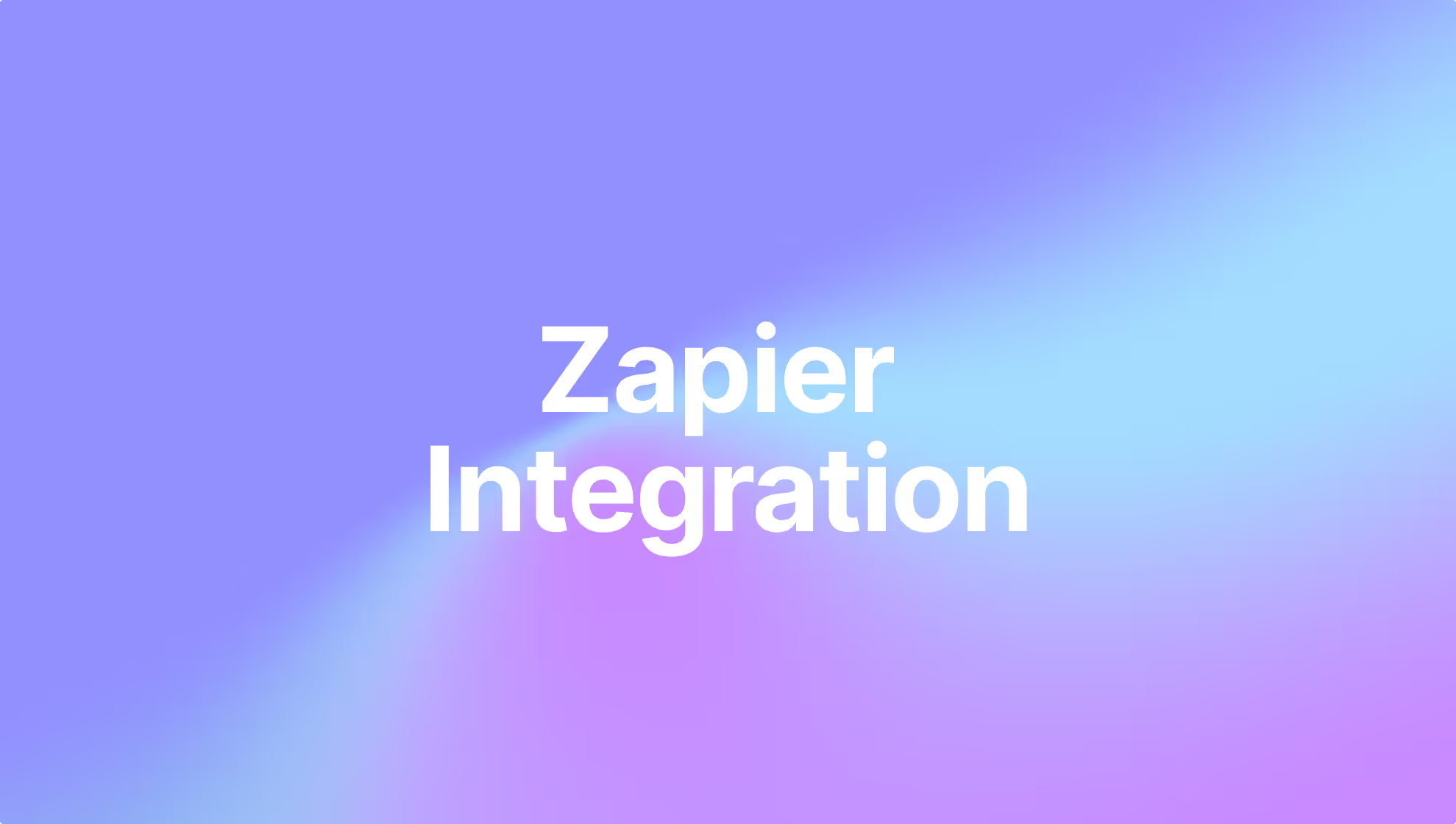Changelog
min de lecture

Zapier Integrations
This tutorial will guide you through the process of connecting any call recording or messaging application to Gravite.io using Zapier. This integration will automate the transfer of messages or recordings to Gravite.io, enabling seamless data management and analysis.
Prerequisites
- Application Account: Ensure you have an active account for the application you want to integrate (e.g., call recording or messaging app).
- **Gravite.io Account:** Ensure you have an active Gravite.io account.
- Zapier Account: You will need a premium Zapier account to access the Webhooks feature.
- API Keys: Obtain API keys from Gravite.io.
Step 1: Set Up a New Zap in Zapier
- Log in to Zapier:
- Go to Zapier and log in with your credentials.
- Create a New Zap:
- Click on the “Make a Zap” button in the top-right corner.
Step 2: Configure the Trigger
- Choose App & Event:
- Search for your call recording or messaging application in the app directory.
- Select the relevant trigger event (e.g., "New Message" or "New Recording"). This will trigger the Zap whenever a new message or recording is created in the specified application.
- Connect Your Application Account:
- Click on “Sign in” and follow the prompts to authorize Zapier to access your application account.
- Select the specific settings (e.g., channels or folders) you want to monitor.
- Test the connection to ensure it's working properly.
Step 3: Set Up the Action
- Choose App & Event:
- Search for "Webhooks by Zapier."
- Configure the Webhook:
- Method: Choose "POST" to send data.
- URL: Enter the Gravite.io endpoint URL for receiving messages or recordings. This can be found in the Gravite.io API documentation.
- Headers: Add the necessary headers, typically including the Authorization header with your API key (
Bearer YOUR_API_KEY). - Data: Configure the JSON payload :
- Here’s a basic example:
- Mapping Fields:
- Title:
- Description: This field should capture a brief title or subject of the message or call.
- Example Mapping: Choose the corresponding field in your application that represents the title or subject.
- For an email:
{{Subject}} - For a call:
{{CallTitle}} - For a message:
{{MessageTitle}}
- For an email:
- Description:
- Description: This field should contain the detailed content or transcript.
- Example Mapping:
- For an email:
{{EmailBody}} - For a call:
{{CallTranscript}} - For a message:
{{MessageContent}}
- For an email:
- owner__email (x2 underscores):
- Description: This field captures the email of your team member who is corresponding with the client.
- Example Mapping:
{{TeamMemberEmail}}
- owner__fullname (x2 underscores):
- Description: This field captures the full name of your team member.
- Example Mapping:
{{TeamMemberFullname}}
- user____email (x4 underscores):
- Description: This field captures the email of your customer.
- Note: The underscores (____) indicate nested fields. Ensure you use four underscores for this specific nested structure.
- Example Mapping:
{{CustomerEmail}}
- user____fullname (x4 underscores):
- Description: This field captures the full name of your customer.
- Example Mapping:
{{CustomerFullname}}
- Ensure you map the appropriate fields from your application to the JSON payload.
- Title:
Step 4: Test the Zap
- Test the Webhook:
- Send a test request to Gravite.io using the test data from your application.
- Verify that the data appears correctly in Gravite.io.
Step 5: Finalize and Activate the Zap
- Name Your Zap:
- Give your Zap a meaningful name, such as "App to Gravite.io Integration."
- Turn on Your Zap:
- Toggle the switch to activate your Zap.
Troubleshooting Tips
- Verify API Permissions:
- Ensure that your API keys have the necessary permissions to post data to Gravite.io.
- Check Field Mappings:
- Double-check that all fields are correctly mapped between your application and Gravite.io. Use double underscores for nested fields as needed (e.g.,
owner__email).
- Double-check that all fields are correctly mapped between your application and Gravite.io. Use double underscores for nested fields as needed (e.g.,
- Use Zapier Logs:
- Utilize Zapier’s built-in logging to diagnose issues with the data flow.
- Consult Documentation:
- Refer to the API documentation for both your application and Gravite.io for detailed information on required fields and data formats.
By following these steps, you will be able to seamlessly connect your call recording or messaging application to Gravite.io, automating the process of transferring data for enhanced management and analysis.





